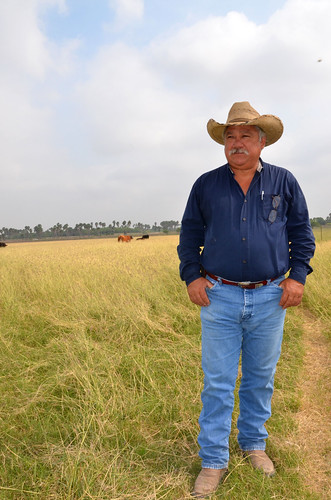
While addressing the effects of the 2012 drought, USDA, the National Oceanic and Atmospheric Administration (NOAA) and other federal partners are preparing proactively for the next one.
As part of President Obama’s Climate Action Plan, the Obama Administration today announced an interagency National Drought Resilience Partnership to help communities better prepare for future droughts and reduce the impact of drought events on livelihoods and the economy.
Spearheaded by USDA and NOAA, members of the National Drought Resilience Partnership will coordinate the delivery of Federal Government policies, programs, information and tools designed to help communities plan for and respond to drought. Other partners in this effort include the Department of the Interior, the Assistant Secretary of the Army for Civil Works, the Federal Emergency Management Agency, the Environmental Protection Agency and the U.S. Department of Energy.
One of the areas that will benefit is Texas.
Some Texas farmers and ranchers are relieved that much needed rains have recently fallen across the state helping to alleviate this year’s persistent drought. But in southern Texas at the Mexico border, the struggle against Mother Nature for producers continues.
Driving from southeast Texas this summer to the border county of Hidalgo, dry stock tanks, bare pastures and cracked soils were constant reminders of the drought’s devastating effects. Despite recent rains, Hidalgo County continues to suffer under moderate to severe drought conditions.
“Rain has been real spotty,” said Oz Longoria, a district conservationist with USDA’s Natural Resources Conservation Service. “In some areas it’s rained moderate from very little to none. Because of the drought, irrigation water availability is very limited. Irrigation reservoirs are not filled to capacity to allow farmers and ranchers to utilize that water for production.”
It’s along the Rio Grande River in Hidalgo County, which separates Texas from Mexico, where generations of the Ramirez family have farmed and raised cattle for decades. Today, the father-and-son team of Jose Ramirez Jr. and Jose Ramirez III, continue to make their living full time from the land.

Water is a precious natural resource to ranchers. Irrigation water is critical to growing the quality forages, or food for cattle, such as bluestem and bermuda grasses. To survive, it’s important for producers to have efficient and affordable ways to use water.
“We’ve hardly got any water,” Jose Ramirez III said. “We need every drop of water to benefit from it.”
To maximize each drop of water, the father and son have worked closely with NRCS on installing irrigation pipeline on their improved forage pastures. This enables them to efficiently distribute water where it is most needed, while optimizing the rate of water usage on forages.
Recently, the two received financial assistance through the USDA StrikeForce for Rural Growth and Opportunity initiative to install irrigation pipeline on 42 acres.
“I don’t know if we could be productive without help from NRCS,” he said. “I really don’t. It’s just tough.”
The national initiative addresses high-priority funding and technical assistance needs in rural communities in 16 states, including Texas, with a special emphasis on historically underserved communities. NRCS has provided more than $1.2 million to help Texas farmers and ranchers put conservation practices on the ground.
“The StrikeForce funding was earmarked for rural economic growth and opportunity in Texas,” Longoria said. “It’s another tool that we can use from the field office standpoint to assist these producers in implementing conservation practices in the field.”




